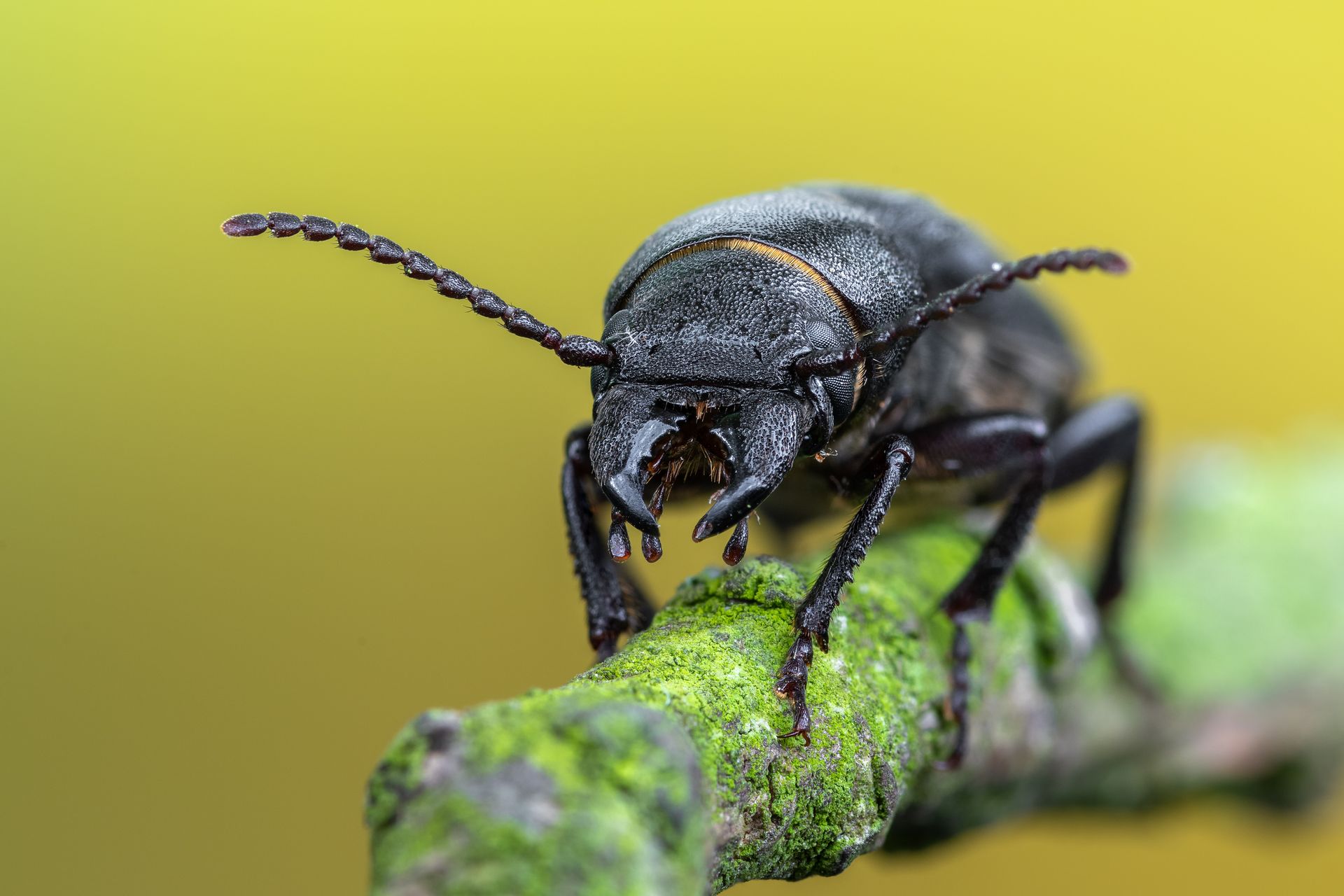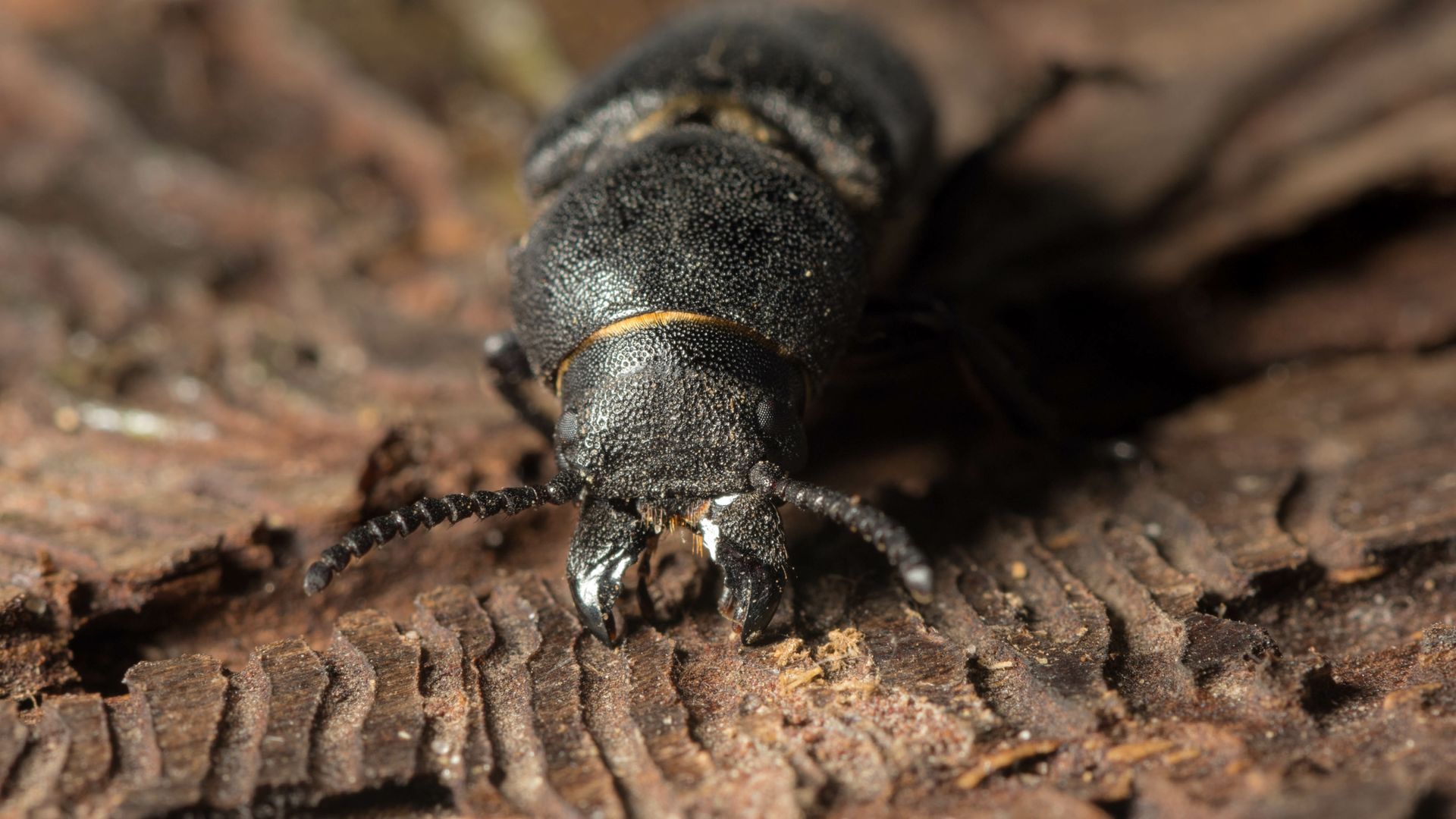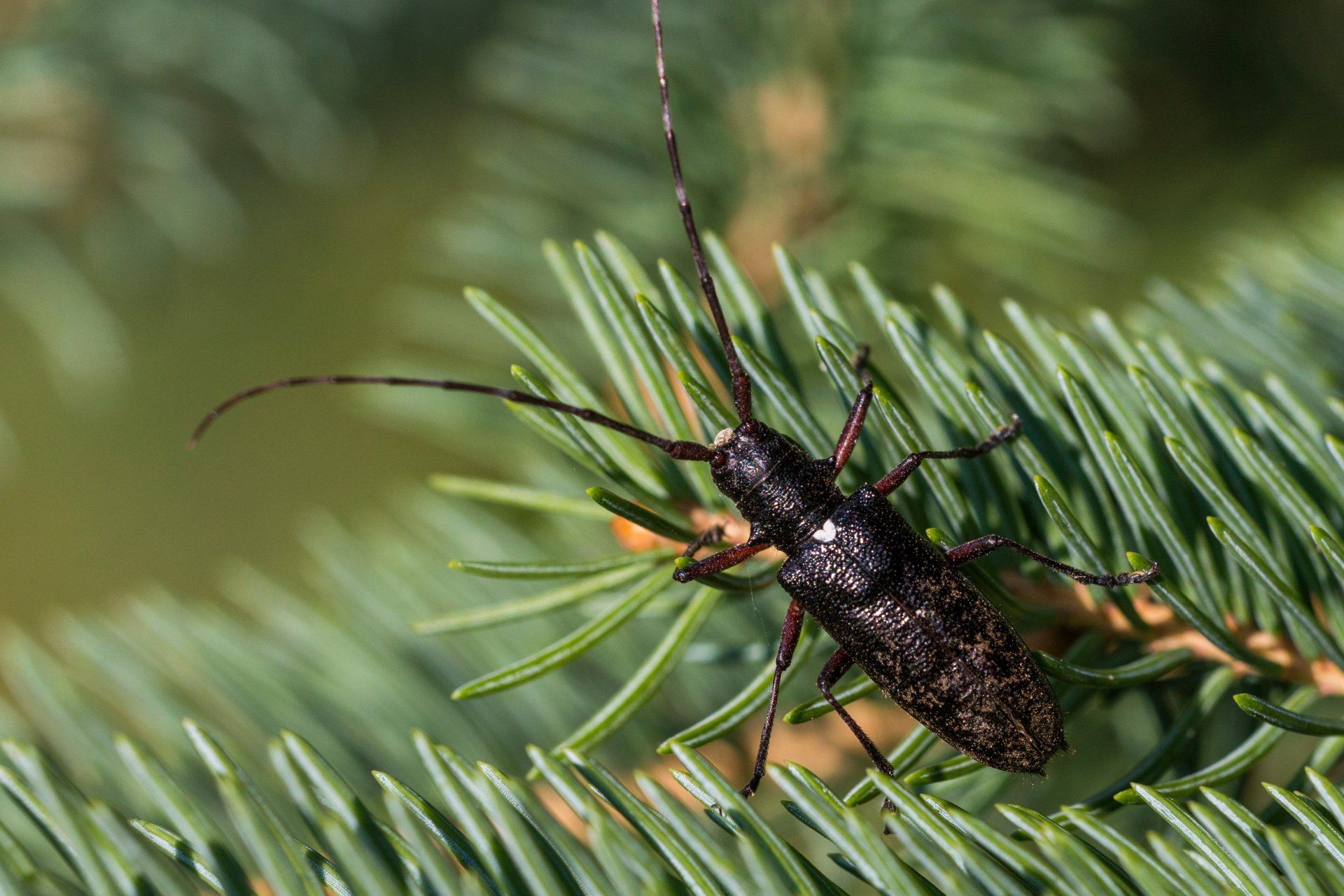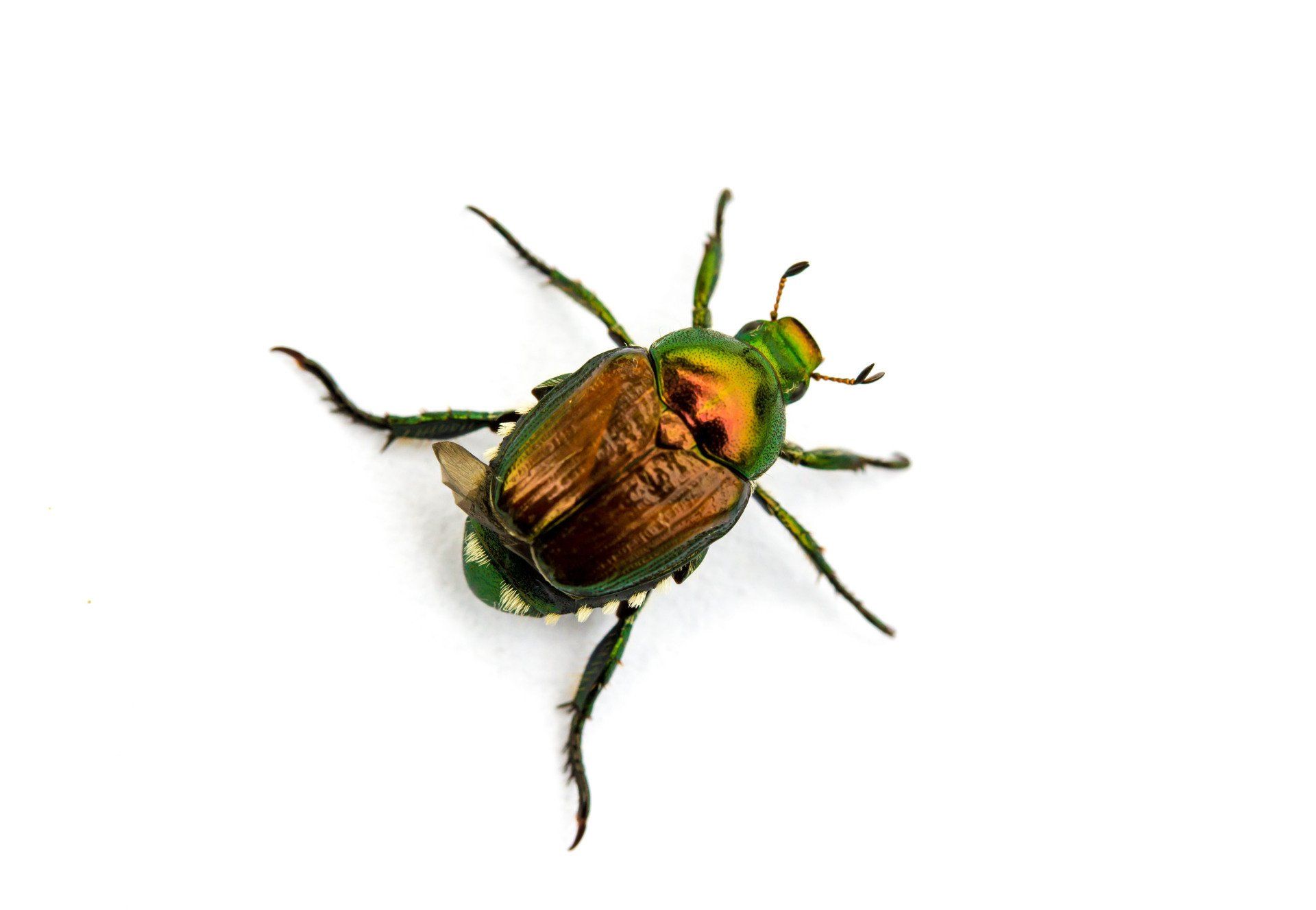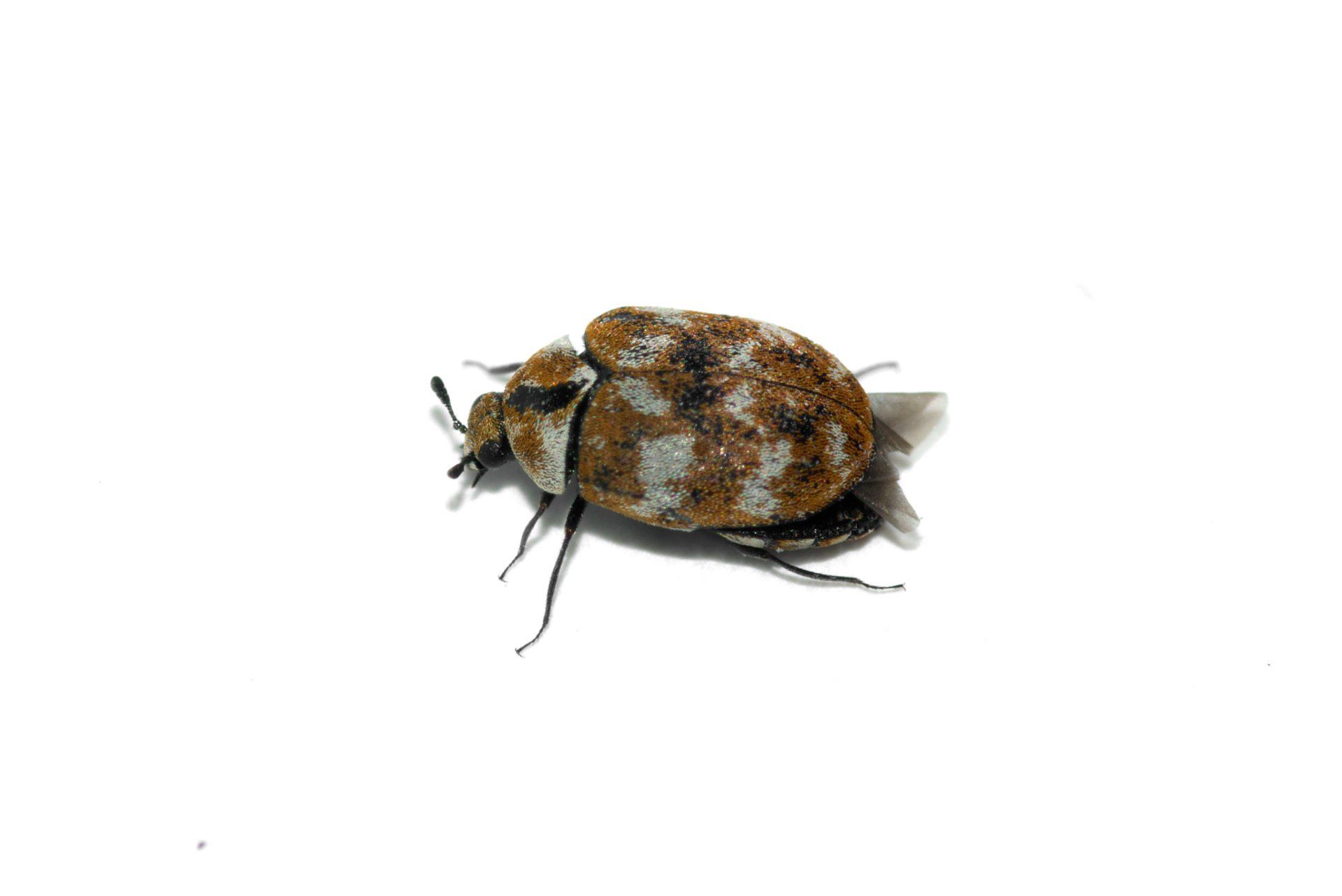Beetle Pest Control
Finding beetles in your pantry, discovering damaged wood surfaces, or noticing holes in fabrics and carpets signals the need for immediate professional intervention. Each beetle species brings unique challenges, from food contamination to structural damage. At EcoGuard Pest Management, we deliver targeted beetle control solutions based on accurate species identification and proven treatment methods.
Call today for a free estimate. 866-326-2847
Pest FREE Guarantee
All Natural Services
Licensed & Insured
Competitive Pricing
Professional Beetle Exterminators & Control Experts
Successful beetle pest control requires expertise in identifying and treating multiple species, each with distinct behaviors and damage patterns. Our certified technicians undergo specialized training to recognize various types of beetles, their life cycles, and evidence of their activity. This knowledge enables us to implement effective control strategies based on the specific beetle species infesting your property, whether they're damaging stored products, wood structures, or textiles.
Why Beetle Are a Serious Problem
EcoGuard Pest Management is a leader in beetle control methodology & service.
Different beetle species create distinct challenges requiring specialized professional attention:
- Wood Boring Beetles: These destructive pests tunnel through structural timber, furniture, and decorative wood, compromising structural integrity and causing extensive damage that often goes unnoticed until severe. Their larvae can spend years feeding inside wood before emerging as adults.
- Carpet Beetles: These insects damage natural fibers throughout homes, destroying carpets, woolens, silk, leather, and stored fabrics. Their shed skins and debris can trigger allergic reactions and respiratory issues in sensitive individuals.
- Stored Product Beetles: Pantry pests like grain beetles and flour beetles contaminate food products, rendering entire packages unusable and quickly spreading to infest other stored goods. Their presence can lead to significant food waste and ongoing contamination issues.
- Japanese Beetles: These invasive pests devastate gardens and landscapes by feeding on over 300 plant species, skeletonizing leaves and destroying flowers, fruits, and grass roots. Their concentrated feeding habits and annual life cycle create recurring seasonal damage that can completely defoliate affected plants, while their grubs damage lawns by feeding on grass roots.
EcoGuard Treatment Options
Our comprehensive approach to beetle control combines multiple strategies based on species identification and infestation patterns:
- Professional Inspection: Thorough examination to identify beetle species, locate infested materials, and determine the full extent of the infestation.
- Source Elimination: Removal and treatment of infested materials, from contaminated food products to damaged wood items, preventing spread to unaffected areas.
- Targeted Treatment: Application of appropriate control methods based on beetle species and location, using professional grade pesticide products for effective elimination.
- Preventive Protection: Implementation of preventive treatments using residual pesticides to protect vulnerable materials from future infestations.
- Environmental Controls: Modification of conditions that attract beetles, including moisture control and proper storage practices.
- Exclusion Methods: Implementation of preventive barriers and sealing techniques to block beetle entry points around windows, doors, utility penetrations, and other access areas.
What Causes Beetle Problems?
Different beetle species invade properties for specific reasons, making prevention complex without professional expertise:
- Wood Conditions: Wood boring beetles seek out specific moisture content in wood, particularly targeting structures with poor ventilation, water damage, or untreated lumber. Powder post beetles specifically prefer hardwoods with high starch content.
- Organic Materials: Carpet beetles enter homes searching for animal based products like wool, fur, feathers, and leather. These materials, especially when undisturbed in dark spaces, provide ideal breeding sites.
- Food Products: Grain beetles, flour beetles, and other stored product pests contaminate dry goods in pantries and storage areas. These infestations often start with a single infested package and spread rapidly to other foods.
- Light Attraction: Many beetle species are drawn to exterior lighting, which guides them to buildings where they find entry points around windows, doors, and utility penetrations.
Signs of a Beetle Infestation
Watch for these distinct indicators of beetle activity:
- Exit holes in wooden surfaces, varying in size by species, often accompanied by sawdust like frass
- Destruction of vegetation with skeletonized leaf structures accompanied by noticeable dead patches in lawns and landscaping
- Adults beetles near windows or light fixtures, particularly noticeable during spring emergence periods
- Damage to wool, silk, and other natural fibers, showing irregular holes or bare patches from carpet beetle feeding
- Cast skins and fuzzy beetle larvae shells around baseboards, in closets, or near infested materials
- Beetle adults or larvae in food packages, accompanied by webbing or contaminated products
DIY vs Professional Beetle Treatment
While retail products promise quick beetle control, DIY methods typically fail to address the complex nature of beetle infestations. Different species require specific approaches, and improper treatment can worsen the problem by driving beetles deeper into materials or causing them to spread to new areas. Amateur treatments often provide a false sense of security while beetles continue damaging property in hidden areas.
Professional beetle control combines species expertise, commercial grade treatments, and systematic approaches that DIY methods cannot match. Our technicians identify the specific beetle species, locate all infested materials, and implement comprehensive treatment strategies that eliminate current infestations while preventing future problems through proper exclusion and preventive measures.
Commercial Beetle Control
In commercial settings, beetle infestations threaten inventory, structures, and reputation while risking regulatory violations. EcoGuard Pest Management delivers specialized beetle control programs that protect your business operations through targeted treatments and preventive strategies. Our commercial services address the unique challenges different beetle species present across various industries.
We provide specialized beetle control solutions for:
- Food Processing Facilities
- Museums and Archives
- Furniture Manufacturers
- Textile Industries
- Warehouses
- Hotels and Resorts
- Retail Spaces
- Historical Properties
- Manufacturing Plants
- Agricultural Storage
For immediate service for all of your beetle control concerns please call 866-326-2847 or complete this form.
Common Beetle Species Found Locally
List of Services
-
Carpet BeetleList Item 1
Carpet beetles are small and as adults will have an oval shaped body that is black with white and yellowish colorings. A single female will lay 25 – 100 eggs at a time. How to get rid of carpet beetles? Call a pest control company immediately if you see carpet beetles crawling on your window sills, carpet areas, or flying in your home.
-
Japanese BeetleList Item 2
This beetle has a metallic green body and will cause damage to many plants. Both the adults and grubs of this type of beetle will cause damage to your plants. They will move with the food source and can be noticed from them leaving the leaves of many plants looking like a skeleton of their original form.
-
Furniture BeetleList Item 3
This common home beetle can live for about 3 years and grow up to about ¼ inch in length. It is the larval stage of this insect that does the damage seen on wood furniture and structures. These beetles are also called woodworms.
EcoGuard Guarantee
Our beetle control services come with a solid commitment to results. We understand that different beetle species require specific approaches, and we guarantee our treatments will effectively address your particular infestation. If beetles return to previously treated areas during your service period, our technicians will promptly return to reassess and retreat at no additional cost. This guarantee includes regular inspections, monitoring of treated areas, and adjustment of control strategies as needed to maintain effective protection.
Pest Control Process
Initial Inspection Our certified technicians begin with a detailed property examination to identify beetle species present and locate all infested materials or vulnerable areas. This comprehensive inspection documents existing damage patterns while evaluating structural conditions and environmental factors that contribute to beetle activity.
Professional Treatment We implement targeted treatments specific to the beetle species and infestation locations identified. Our treatment methods combine specialized products and pesticide applications with removal of infested materials to eliminate active beetle populations while preventing spread to unaffected areas.
Exclusion and Prevention After treatment, we focus on sealing entry points and modifying conditions that attract beetles to prevent future infestations. This includes addressing moisture issues, recommending proper storage methods for susceptible materials, and implementing physical barriers to protect your property from new beetle invasions.
Ongoing Monitoring Regular service visits allow us to monitor treatment effectiveness and inspect for any signs of new beetle activity. We maintain detailed documentation of all findings and continue to assess previously treated areas while adjusting prevention strategies as needed to ensure long term protection.
Seasonal Treatment Plan for Beetle Control
Spring: Focus intensifies as beetle activity increases with warming temperatures. We inspect for emergence holes and adult beetles, particularly around windows and lights, while implementing preventive treatments before peak breeding season begins.
Summer: Peak beetle season requires vigilant monitoring of both adult activity and larval development. We concentrate on identifying and treating new infestations while maintaining protection of vulnerable materials and structures.
Fall: As temperatures cool, many beetle species seek indoor shelter. Our focus shifts to preventing intrusion while continuing to monitor existing treatments and inspect for signs of internal activity.
Winter: Though adult beetle activity decreases, larvae remain active within infested materials. We concentrate on thorough inspections of susceptible items, particularly in storage areas and quiet spaces where infestations can develop unnoticed.
Beetle Control FAQs
What health risks do stored product beetles pose to families?
Stored product beetles contaminate food sources through their presence, droppings, and shed skins, potentially causing digestive issues if contaminated foods are consumed. These pests can infest a wide range of dried foods including grains, cereals, pasta, spices, and pet foods, leading to significant food waste and possible allergic reactions in sensitive individuals.
How do you identify different types of wood-boring beetles?
Wood boring beetles can be identified by their exit holes, which vary in size and shape depending on species, along with the type of wood they infest and the consistency of frass (sawdust) they create. Powder post beetles typically leave tiny holes and fine powder, while larger species create bigger holes and coarser frass, making proper identification crucial for effective treatment.
What structural damage can wood-boring beetles cause?
Wood boring beetles can severely compromise structural integrity by tunneling through support beams, flooring, and other wooden elements, sometimes reducing wood to a powder like consistency from the inside out. Their damage often goes unnoticed for years as larvae feed inside the wood, potentially leading to extensive repairs once discovered.
How extensive can a carpet beetle infestation become?
Carpet beetles can spread throughout an entire home, damaging natural fibers in carpets, furniture, clothing, and stored textiles. A single female can lay up to 100 eggs, with larvae feeding for 3-12 months while moving from item to item, making early detection crucial to prevent widespread damage.
What's included in a professional beetle inspection?
Professional inspections include thorough examination of wood structures, stored products, fabrics, and common beetle entry points, along with identification of specific beetle species present. Our technicians document all findings, assess damage patterns, and develop customized treatment recommendations based on the type and extent of infestation.
How long does beetle elimination typically take?
Initial treatment results are often seen within 2-3 weeks, though complete elimination may take 1-2 months depending on the beetle species and severity of infestation. Treatment duration varies particularly with wood boring beetles in your home, which may require multiple treatments to address larvae deep within wood.
Are professional beetle treatments safe for children and pets?
Our treatments utilize EPA-registered pesticides specifically formulated for beetle control, applied according to strict safety protocols by licensed technicians. We carefully select and place products to protect family members and pets while maintaining effective control of beetle populations.
What makes professional beetle control more effective than DIY methods?
Professional control combines accurate species identification, commercial grade treatments, and comprehensive prevention strategies that address both adult beetles and larvae. Our technicians understand beetle life cycles and behavior patterns, allowing them to target treatments effectively while preventing spread to uninfested areas.
How do beetles spread throughout a structure?
Beetles can spread by flying to new areas, crawling through wall voids, or being transported in infested materials like furniture, food products, or fabrics. Many species are attracted to light and can quickly establish new infestations in suitable materials throughout a building.
What types of beetles commonly infest homes?
Common household beetles include carpet beetles, various wood boring species like powder post beetles, and stored product pests such as grain beetles and flour beetles. Each species targets specific materials, from natural fibers to wooden structures or dried foods, requiring different control approaches.
What ongoing maintenance is needed after initial beetle control?
Regular inspections are recommended to monitor for new activity and ensure prevention measures remain effective. We typically suggest quarterly services to identify and address potential beetle problems before they develop into serious infestations.
What documentation is provided for commercial beetle control?
Commercial clients receive detailed service reports documenting beetle species identified, treatments performed, and recommendations for preventing future infestations. This documentation includes monitoring records, treatment logs, and compliance paperwork required for regulatory purposes.
How do professionals monitor beetle activity?
We use various monitoring methods including inspection of susceptible materials, documentation of new damage or frass, and checking for adult beetles or larvae. Regular monitoring helps track treatment effectiveness and detect new activity before it becomes problematic.
What guarantees come with professional beetle control?
Our beetle control services include a comprehensive guarantee covering return visits if beetle activity continues during the warranty period. We ensure complete satisfaction through ongoing monitoring and adjustment of control strategies as needed.
How do property conditions affect beetle infestations?
Factors like moisture levels, temperature, storage conditions, and building maintenance significantly impact beetle activity and infestation potential. Poor ventilation, water damage, and improper storage of susceptible materials create ideal conditions for beetle infestations to develop.
What factors determine the cost of professional beetle treatment?
Treatment costs vary based on factors including beetle species present, infestation severity, property size, and necessary prevention measures. Initial inspections allow us to provide accurate cost estimates based on your specific situation.
How do professionals assess the extent of beetle damage?
Our technicians examine visible damage patterns, use probing tools to test wood integrity, and inspect hidden areas where beetles commonly feed. This assessment includes documentation of active infestations versus old damage to determine appropriate treatment strategies.
What unique challenges do beetles present in commercial settings?
Commercial beetle infestations can threaten inventory, compromise structural integrity, and risk regulatory violations. These settings often require specialized treatment approaches that maintain business operations while ensuring effective pest control.
How do seasonal changes affect beetle activity?
Most beetle species show increased activity during spring and summer months when temperatures rise and breeding increases. However, indoor infestations can remain active year round, particularly in climate controlled environments.
What makes beetles so destructive to stored products and materials?
Beetles can contaminate or damage materials both as adults and larvae, with larvae often causing the most extensive damage during their extended feeding period. Their ability to infest a wide range of materials, combined with rapid reproduction rates, allows them to quickly cause significant losses.
How do you get rid of a beetle infestation?
Professional beetle control requires a comprehensive approach combining proper species identification, targeted treatments, and prevention methods specific to the type of beetle present. Success depends on addressing both adult beetles and larvae while implementing proper exclusion techniques and environmental modifications to prevent beetle reinfestation.
What is the best thing to keep beetles away?
Effective beetle prevention involves proper material storage, moisture control, and regular inspection of susceptible items like wood, fabrics, and stored foods. Professional exclusion methods that seal entry points and modify conditions that attract beetles provide the most reliable long term protection
Can an exterminator get rid of beetles?
Professional pest control service technicians have the expertise, tools, and commercial grade products needed to effectively eliminate beetle infestations while preventing future problems. Their knowledge of beetle biology and behavior enables them to implement comprehensive treatment strategies that address both current infestations and prevention.
Why is my house infested with beetles?
Houses attract beetles through various conditions including moisture issues, improper storage of susceptible materials, and existing entry points around the structure. Different beetle species are drawn to specific materials. Wood boring beetles seek out certain wood conditions, carpet beetles target natural fibers, and stored product beetles infest food items which makes proper identification crucial for addressing the root causes of infestation.
Additional Beetle Resources
Additional Pest Commonly Treated
See our Pest Library for a full list of insects we treat for. If you don’t see what you are looking for give us a call. We are always here to help! EcoGuard Pest Management provides eco-friendly services for both residential and commercial properties.
Why Choose EcoGuard?
- A pest free guarantee
- Green & ecofriendly pesticides that are state approved
- Licensed, bonded, and insured services
- Competitive pricing




